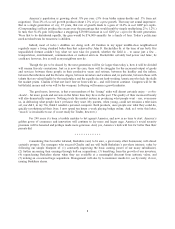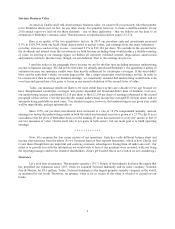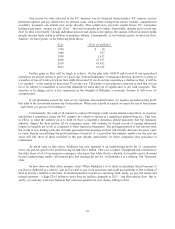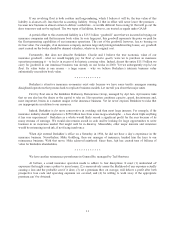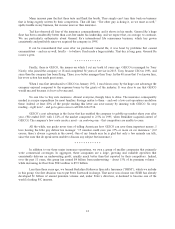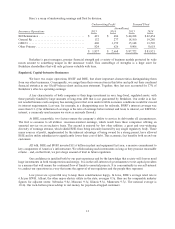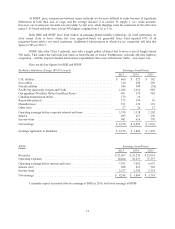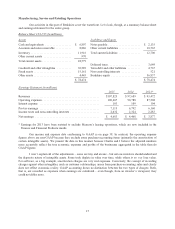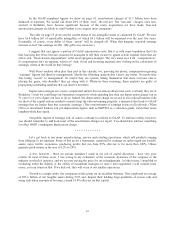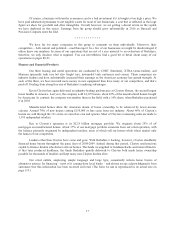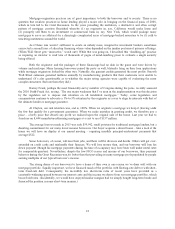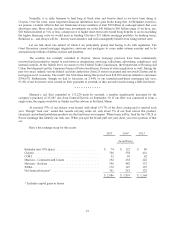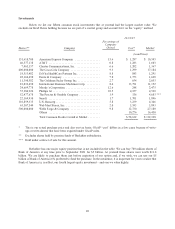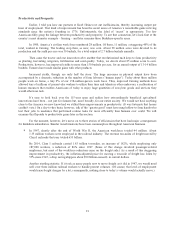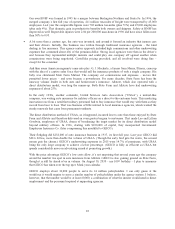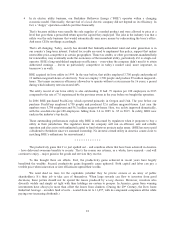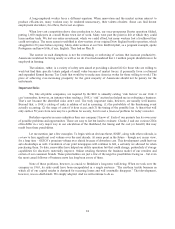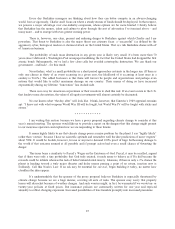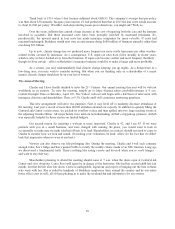Berkshire Hathaway 2015 Annual Report Download - page 20
Download and view the complete annual report
Please find page 20 of the 2015 Berkshire Hathaway annual report below. You can navigate through the pages in the report by either clicking on the pages listed below, or by using the keyword search tool below to find specific information within the annual report.Mortgage-origination practices are of great importance to both the borrower and to society. There is no
question that reckless practices in home lending played a major role in bringing on the financial panic of 2008,
which in turn led to the Great Recession. In the years preceding the meltdown, a destructive and often corrupt
pattern of mortgage creation flourished whereby (1) an originator in, say, California would make loans and
(2) promptly sell them to an investment or commercial bank in, say, New York, which would package many
mortgages to serve as collateral for a dizzyingly complicated array of mortgage-backed securities to be (3) sold to
unwitting institutions around the world.
As if these sins weren’t sufficient to create an unholy mess, imaginative investment bankers sometimes
concocted a second layer of sliced-up financing whose value depended on the junkier portions of primary offerings.
(When Wall Street gets “innovative,” watch out!) While that was going on, I described this “doubling-up” practice
as requiring an investor to read tens of thousands of pages of mind-numbing prose to evaluate a single security
being offered.
Both the originator and the packager of these financings had no skin in the game and were driven by
volume and mark-ups. Many housing borrowers joined the party as well, blatantly lying on their loan applications
while mortgage originators looked the other way. Naturally, the gamiest credits generated the most profits. Smooth
Wall Street salesmen garnered millions annually by manufacturing products that their customers were unable to
understand. (It’s also questionable as to whether the major rating agencies were capable of evaluating the more
complex structures. But rate them they did.)
Barney Frank, perhaps the most financially-savvy member of Congress during the panic, recently assessed
the 2010 Dodd-Frank Act, saying, “The one major weakness that I’ve seen in the implementation was this decision
by the regulators not to impose risk retention on all residential mortgages.” Today, some legislators and
commentators continue to advocate a 1%-to-5% retention by the originator as a way to align its interests with that of
the ultimate lender or mortgage guarantor.
At Clayton, our risk retention was, and is, 100%. When we originate a mortgage we keep it (leaving aside
the few that qualify for a government guarantee). When we make mistakes in granting credit, we therefore pay a
price – a hefty price that dwarfs any profit we realized upon the original sale of the home. Last year we had to
foreclose on 8,444 manufactured-housing mortgages at a cost to us of $157 million.
The average loan we made in 2015 was only $59,942, small potatoes for traditional mortgage lenders, but a
daunting commitment for our many lower-income borrowers. Our buyer acquires a decent home – take a look at the
home we will have on display at our annual meeting – requiring monthly principal-and-interest payments that
average $522.
Some borrowers, of course, will lose their jobs, and there will be divorces and deaths. Others will get over-
extended on credit cards and mishandle their finances. We will lose money then, and our borrower will lose his
down payment (though his mortgage payments during his time of occupancy may have been well under rental rates
for comparable quarters). Nevertheless, despite the low FICO scores and income of our borrowers, their payment
behavior during the Great Recession was far better than that prevailing in many mortgage pools populated by people
earning multiples of our typical borrower’s income.
The strong desire of our borrowers to have a home of their own is one reason we’ve done well with our
mortgage portfolio. Equally important, we have financed much of the portfolio with floating-rate debt or with short-
term fixed-rate debt. Consequently, the incredibly low short-term rates of recent years have provided us a
constantly-widening spread between our interest costs and the income we derive from our mortgage portfolio, which
bears fixed rates. (Incidentally, we would have enjoyed similar margins had we simply bought long-term bonds and
financed the position in some short-term manner.)
18


